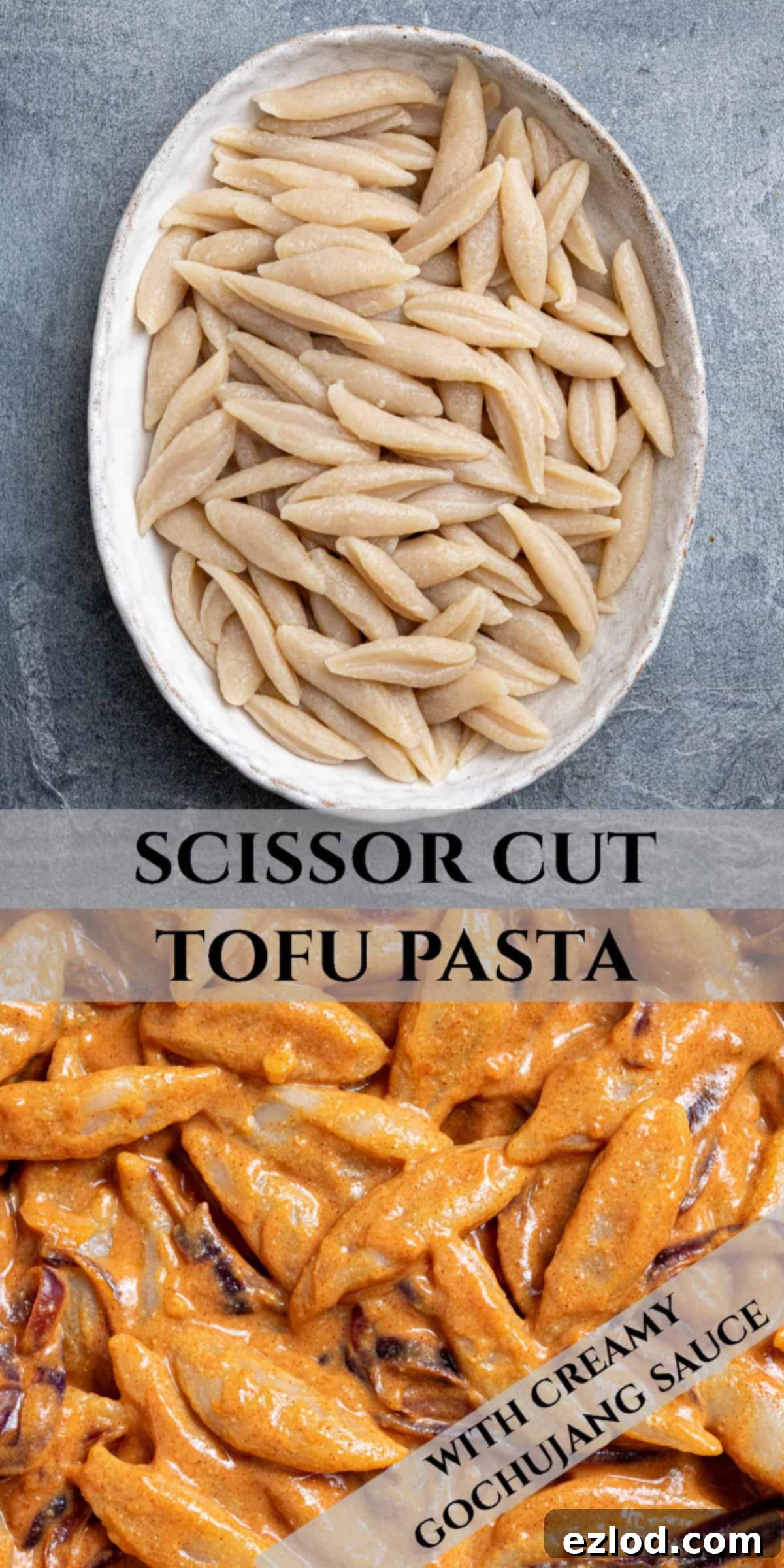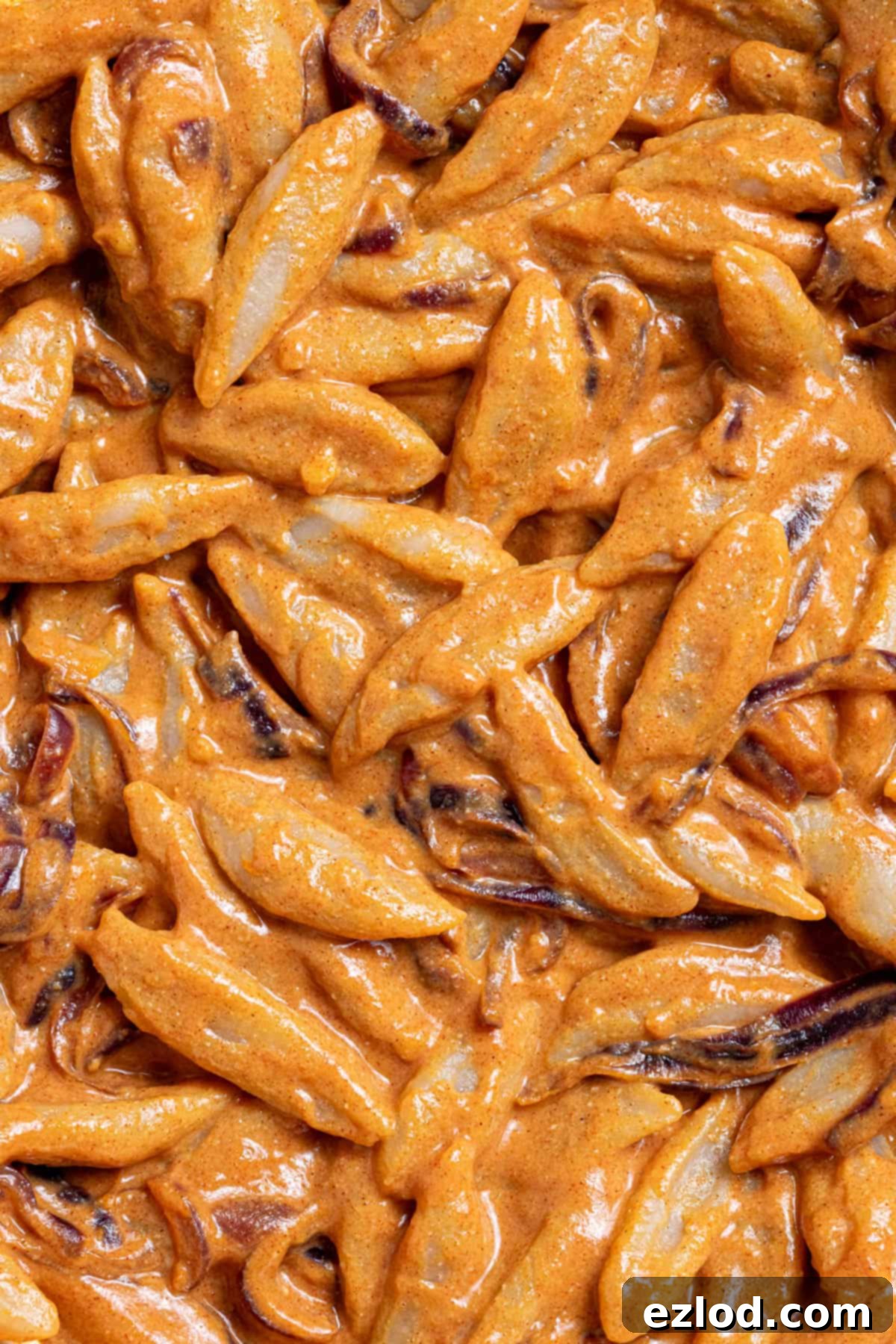Effortless Vegan Scissor Cut Tofu Pasta with Spicy Creamy Gochujang Sauce
Discover a truly unique and incredibly simple way to make homemade pasta with this vegan scissor cut tofu pasta recipe. Forget about complicated pasta machines or lengthy rolling processes – these delightful noodles come together with just two core ingredients: silken tofu and plain flour. The magic lies in the name: you simply snip the dough with kitchen scissors directly into boiling water, making it an accessible and fun cooking experience for everyone.
This innovative pasta is then paired with an incredibly easy, lusciously creamy, and perfectly spicy gochujang sauce. The result is a quick, healthy, and satisfying high-protein meal that bursts with flavour, leaving you feeling nourished and delightfully full. It’s a fantastic option for weeknights, meal prep, or whenever you crave a hearty, plant-based dish with a Korean-inspired kick.
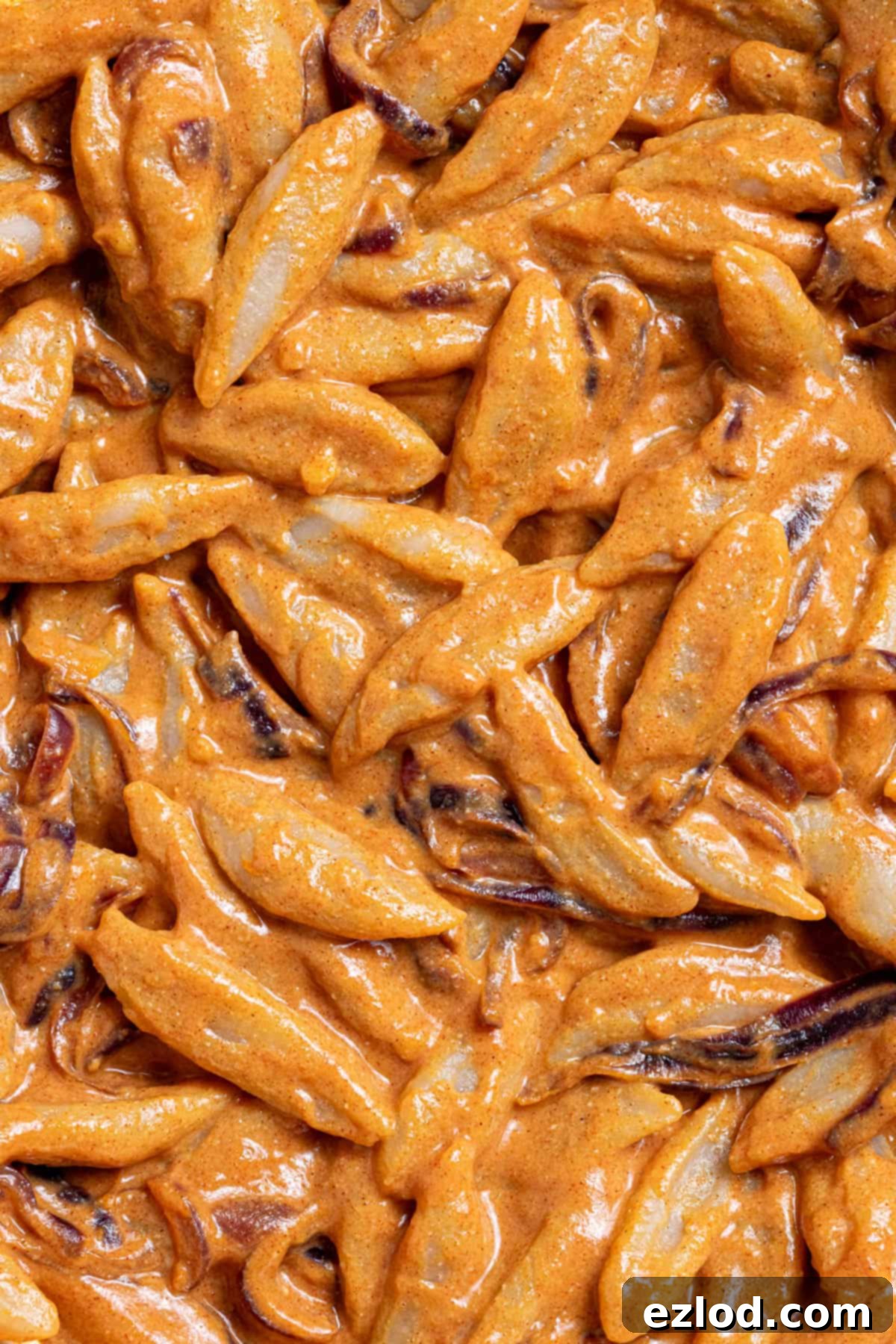
I find myself returning to this scissor cut tofu pasta recipe time and time again. Its sheer simplicity makes it a joy to prepare, and the resulting noodles are wonderfully satisfying. Beyond that, their neutral yet comforting flavour profile means they effortlessly complement almost any sauce you can imagine. The texture is a highlight: soft, yet delightfully chewy, with an endearing shell or leaf-like shape that adds character to your plate. While the technique itself is surprisingly simple for home cooks, it’s rooted in a rich culinary tradition. The scissor-cutting method is believed to have originated in China, a variation of ‘Dao Xiao Mian’ or knife-cut noodles, adapted here for even greater ease.
What truly elevates this pasta from a simple flour-and-water noodle is the incorporation of blended silken tofu. Instead of using plain water, the silken tofu serves as both the liquid component and a powerhouse of plant-based protein. This not only boosts the nutritional value of the pasta significantly but also contributes to a wonderfully tender and unique dough consistency. As a bonus, any remaining blended tofu after making the noodles is ingeniously repurposed into the accompanying sauce. This clever trick ensures a luxurious, creamy texture for your sauce without the need for excessive fats or dairy, keeping the meal light yet indulgent.
For this particular rendition, I’ve crafted a straightforward creamy gochujang sauce that is ready in under 10 minutes. Despite its rapid preparation, this sauce is incredibly rich, deeply flavourful, and delivers a satisfying kick of spice that perfectly balances the subtle taste of the tofu noodles. It’s a harmonious pairing that makes for an unforgettable meal.
While the concept of scissor cut pasta has been a staple in my kitchen for some time, the brilliant idea of combining it with a creamy gochujang sauce came from the inspiring culinary creations of Prunchme on Instagram. Full credit goes to him for this delicious and innovative flavour combination!
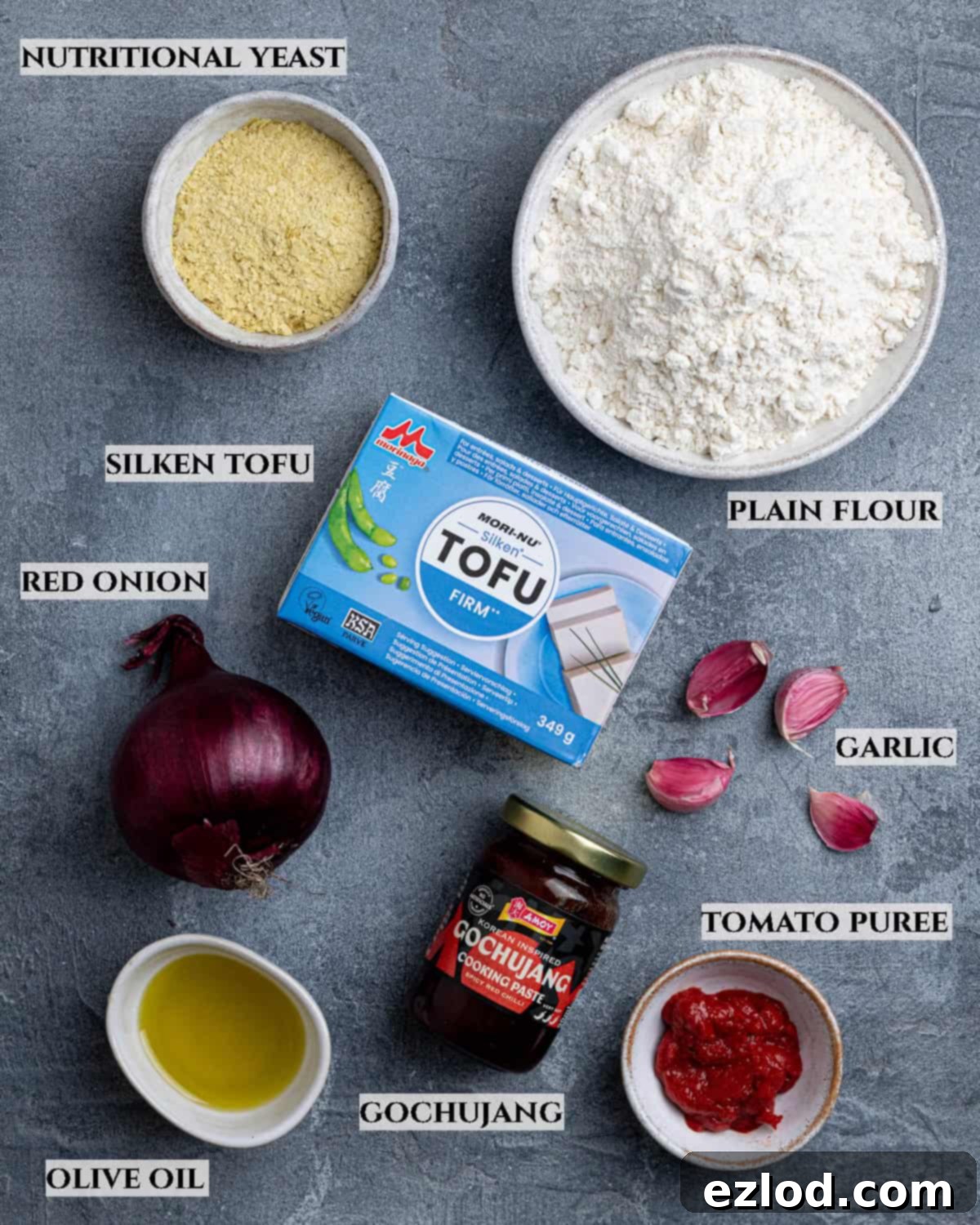
Ingredient Spotlight: What You’ll Need
Understanding each ingredient’s role is key to mastering this recipe and even experimenting with variations. Here’s a closer look at what makes this dish shine:
For The Scissor Cut Tofu Pasta:
Silken Tofu: This is arguably the star ingredient of our noodles, distinguishing them from traditional pasta. Silken tofu is renowned for its incredibly soft, custard-like texture, making it perfect for blending into a smooth, creamy liquid that acts as our primary binder. Unlike firm or extra-firm block tofu, silken tofu doesn’t require pressing and blends effortlessly, contributing to the high protein content and unique mouthfeel of the noodles. While often found in the ‘international’ or ‘Asian’ section of supermarkets and usually shelf-stable, check for brands like Yutaka or Mori-nu. Firm silken tofu is generally ideal for this recipe as it offers a slightly richer protein content and thicker consistency when blended, but softer varieties will also work.
Plain Flour: Also known as all-purpose flour, this forms the structural backbone of our pasta. I have exclusively tested this recipe using plain flour, which provides the necessary gluten development for chewy, resilient noodles. Italian 00 flour, known for its fine texture and ability to create silky smooth pasta, would also be an excellent alternative if you have it on hand. However, I strongly advise against using wholemeal flour, as its higher bran content can make the dough difficult to handle and result in a denser, less pleasant texture. Similarly, gluten-free flours behave very differently and would require significant adjustments to achieve a workable dough and desirable noodle texture.
For The Creamy Gochujang Sauce:
Gochujang: This vibrant, fiery red paste is a fundamental condiment in Korean cuisine and the heart of our sauce’s flavour. Gochujang is a spicy, savoury, and subtly sweet fermented chilli paste, offering a complex depth of flavour that sets it apart from simple chili flakes or sriracha. Its fermentation process contributes a unique umami richness. The amount you use can be adjusted to your personal spice preference – start with a tablespoon for a milder heat and add more if you like things extra spicy.
Red Onion and Garlic: These aromatic powerhouses form the foundational flavour base for our sauce. Red onion is my preferred choice here as it offers a slightly milder, sweeter flavour profile than white or yellow onions, and it softens beautifully in a shorter cooking time. This means less waiting for those delicious aromatics to caramelize. For convenience, either freshly minced garlic or pre-chopped frozen garlic will work perfectly.
Tomato Puree: Also widely known as tomato paste, this concentrated ingredient is crucial for adding a deep, rich, and umami-packed flavour to the sauce. It provides a touch of sweetness and acidity, helping to balance the spice of the gochujang and round out the overall flavour profile.
Nutritional Yeast: A staple in vegan cooking, nutritional yeast contributes a distinctly savoury, “cheesy” flavour that wonderfully complements the spice and richness of the gochujang. Beyond flavour, it’s also a great source of B vitamins, adding another layer of nutritional benefit to our meal.
Olive Oil or Vegan Butter: Essential for sautéing the aromatics and building the flavour base of the sauce.
Soy Sauce (Optional): A dash of soy sauce can be added at the end to enhance the umami and depth of flavour, particularly if you feel the sauce needs a final savoury boost. Use a low-sodium variety if preferred.
Salt and Pepper: Basic seasonings to taste, allowing you to fine-tune the flavour balance of the finished dish.
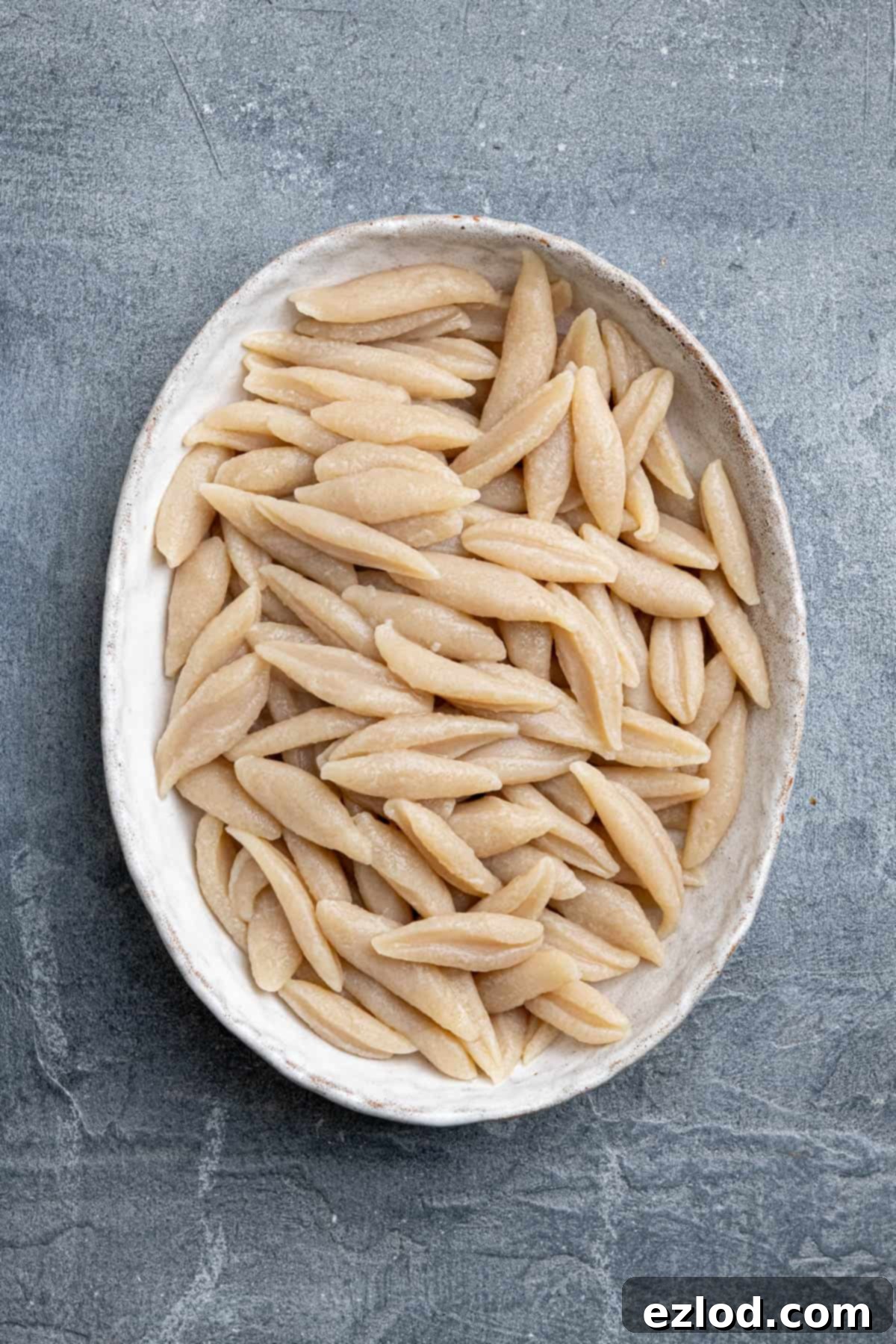
How To Master Scissor Cut Tofu Pasta: A Step-by-Step Guide
(For precise measurements and detailed instructions, please refer to the comprehensive recipe card located at the bottom of this page.)
Step 1: Prepare the Silken Tofu. Begin by carefully placing the entire block of silken tofu into a high-speed blender or food processor. Blend thoroughly until you achieve a completely smooth, lump-free, and creamy consistency. This step is crucial for ensuring a uniform texture in your pasta dough.
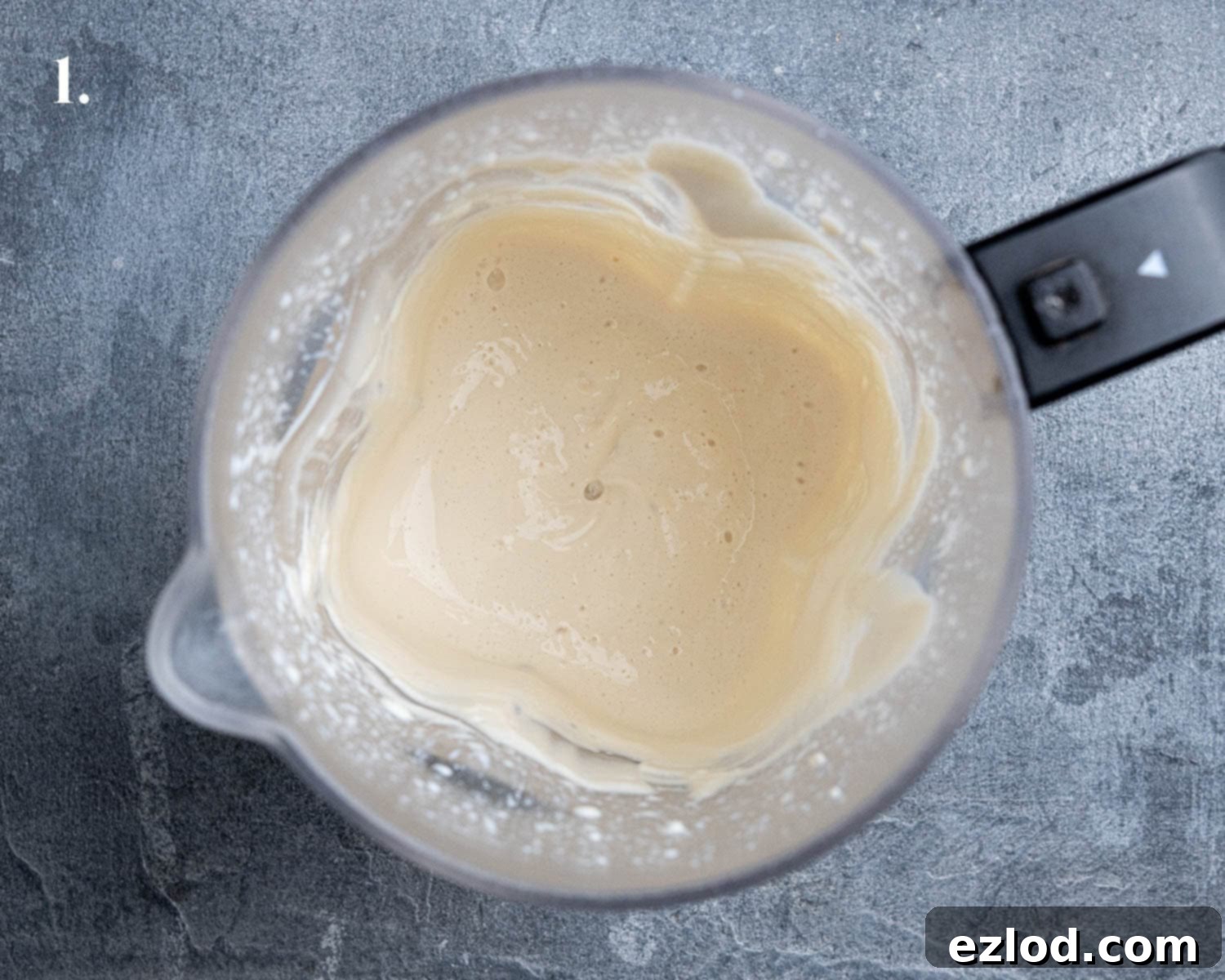
Step 2: Form the Pasta Dough. In a large mixing bowl, combine the plain flour with 180g (approximately ¾ cup) of your freshly blended silken tofu and a small pinch of salt. Use a sturdy spoon or spatula to mix these ingredients until a shaggy, cohesive dough begins to form. Once it’s too difficult to mix with the spoon, switch to using your hands to gather and press the mixture into a firm ball. The dough should feel quite stiff and not overly sticky. If it feels too dry and crumbly, add a tiny bit more blended tofu (a teaspoon at a time). If it’s too sticky, incorporate a small amount of additional flour until the desired stiffness is achieved.
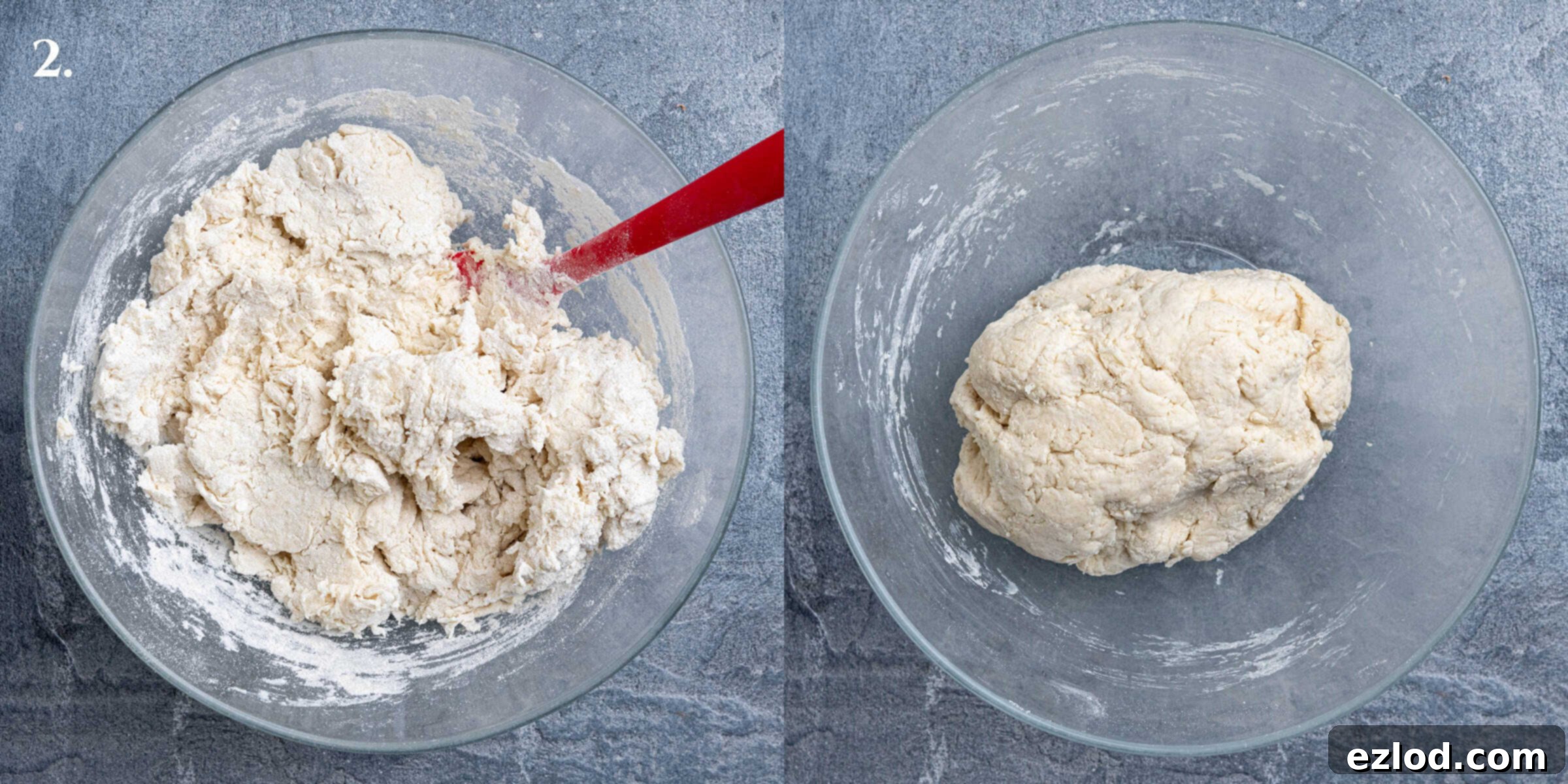
Step 3: Knead and Rest the Dough. Transfer the dough to a clean, unfloured work surface. Knead the dough vigorously for about 5 minutes. The goal is to develop the gluten, making the dough exceptionally smooth, elastic, and no longer sticky to the touch. Once kneaded, cover the dough ball with a damp cloth or plastic wrap and allow it to rest for 15-20 minutes. This resting period is vital, as it allows the gluten to relax, making the dough easier to cut and preventing it from shrinking excessively during cooking. While the dough rests, bring a large pot of generously salted water to a rolling boil – it’s crucial to have enough water to prevent the noodles from clumping.
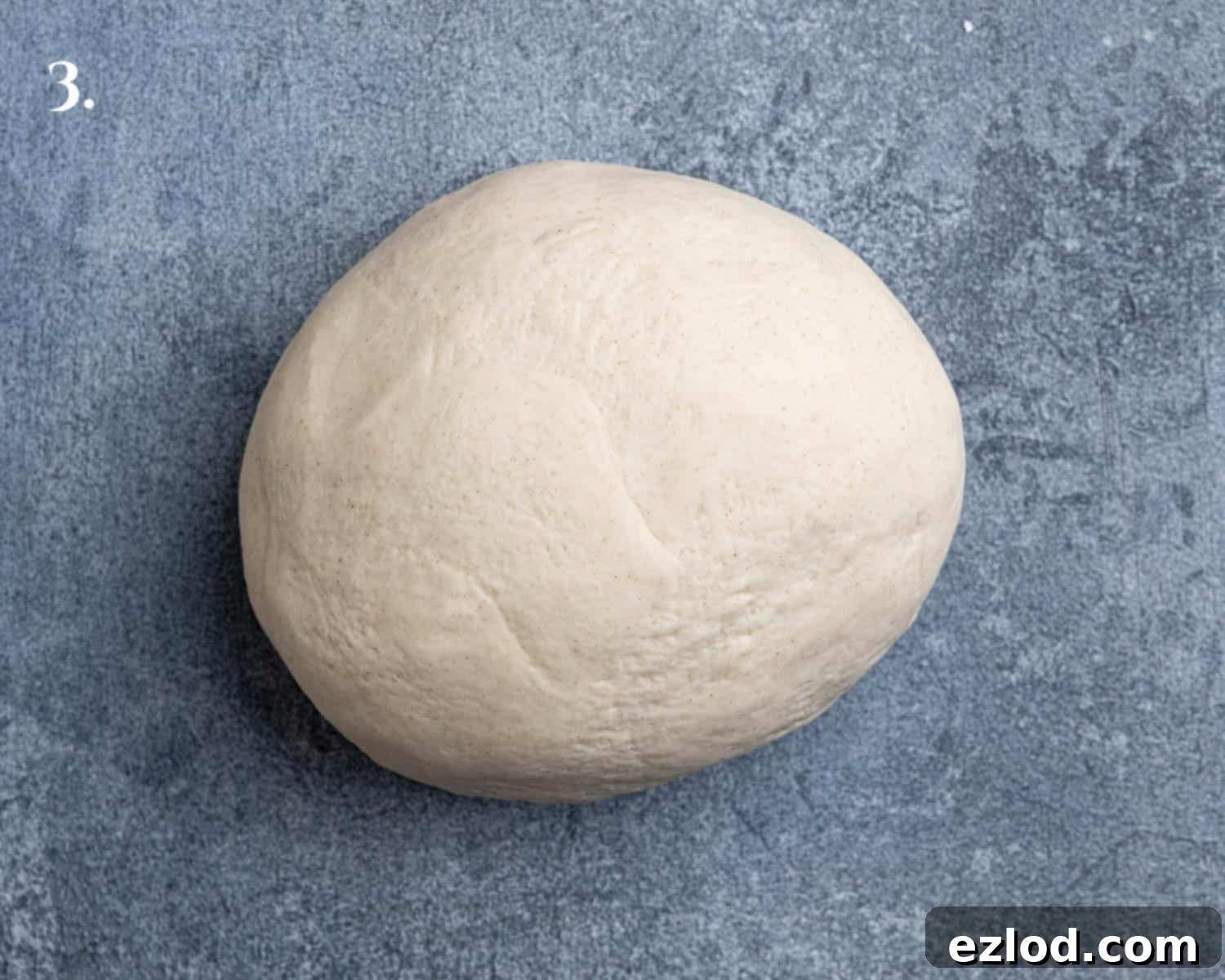
Step 4: Scissor Cut the Pasta. With your dough rested and water boiling, it’s time for the signature scissor cut! Take a pair of clean kitchen scissors and begin snipping off small, bite-sized pieces of the dough. You have two options: either cut the pieces directly into the vigorously boiling water, or snip them onto a lightly floured tray if you prefer more control. If cutting onto a tray, make sure the pieces are in a single layer to prevent sticking. Once all the dough is cut (or if your tray is full), gently tip all the pieces into the boiling water. Give them a brief stir to ensure they separate and don’t stick to the bottom of the pot.
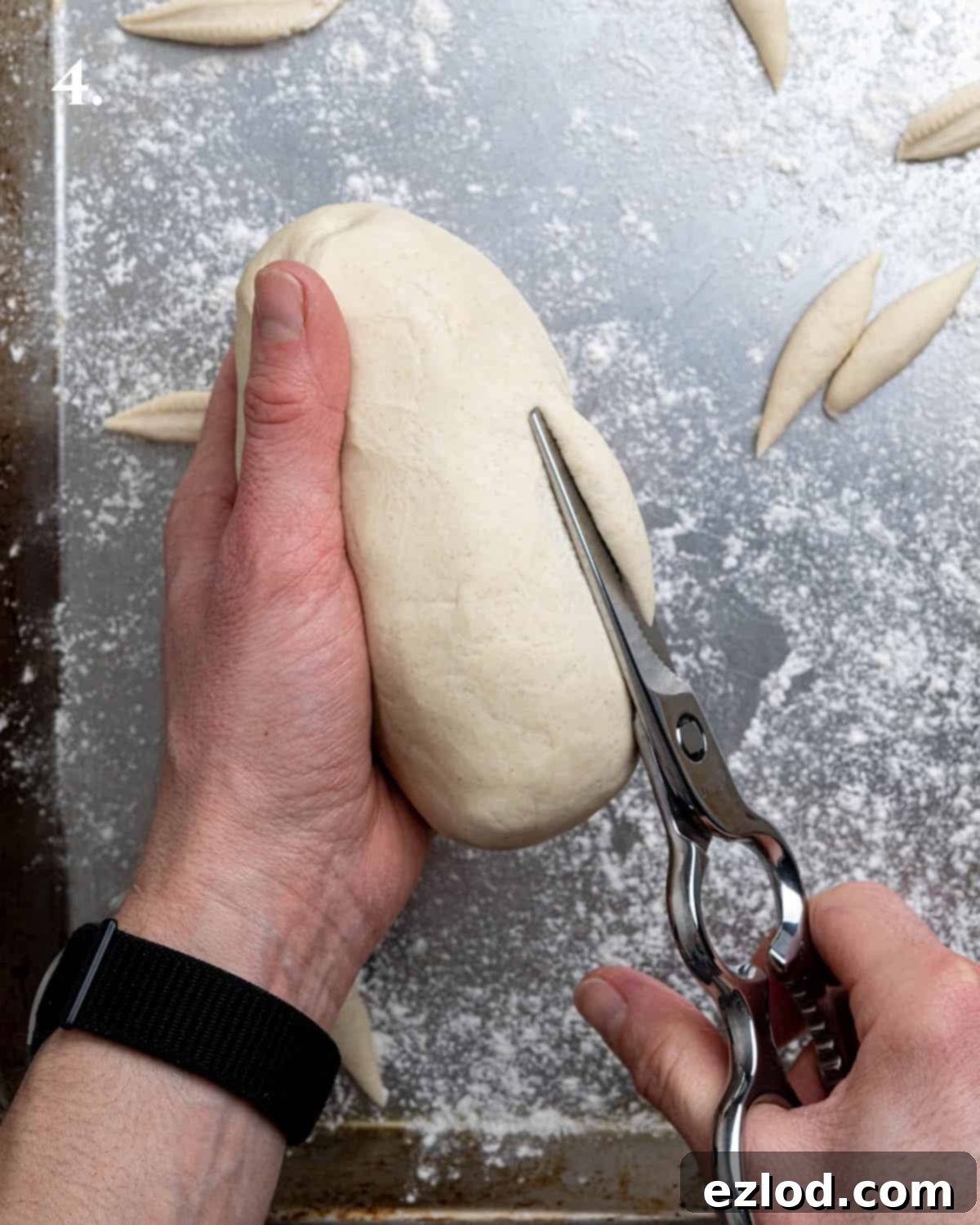
Step 5: Cook and Drain the Noodles. Allow the noodles to cook for 5-10 minutes. The exact cooking time will depend on the thickness and size of your cut pieces, but they should float to the surface when cooked through. Aim for an ‘al-dente’ texture – firm yet tender in the middle – to avoid them becoming too soft. Once cooked, drain the noodles thoroughly, making sure to reserve about 120ml (½ cup) of the starchy pasta cooking water. This reserved water will be essential for achieving the perfect consistency in our gochujang sauce. Briefly rinsing the drained noodles with cold water can also help prevent them from sticking together while you prepare the sauce.
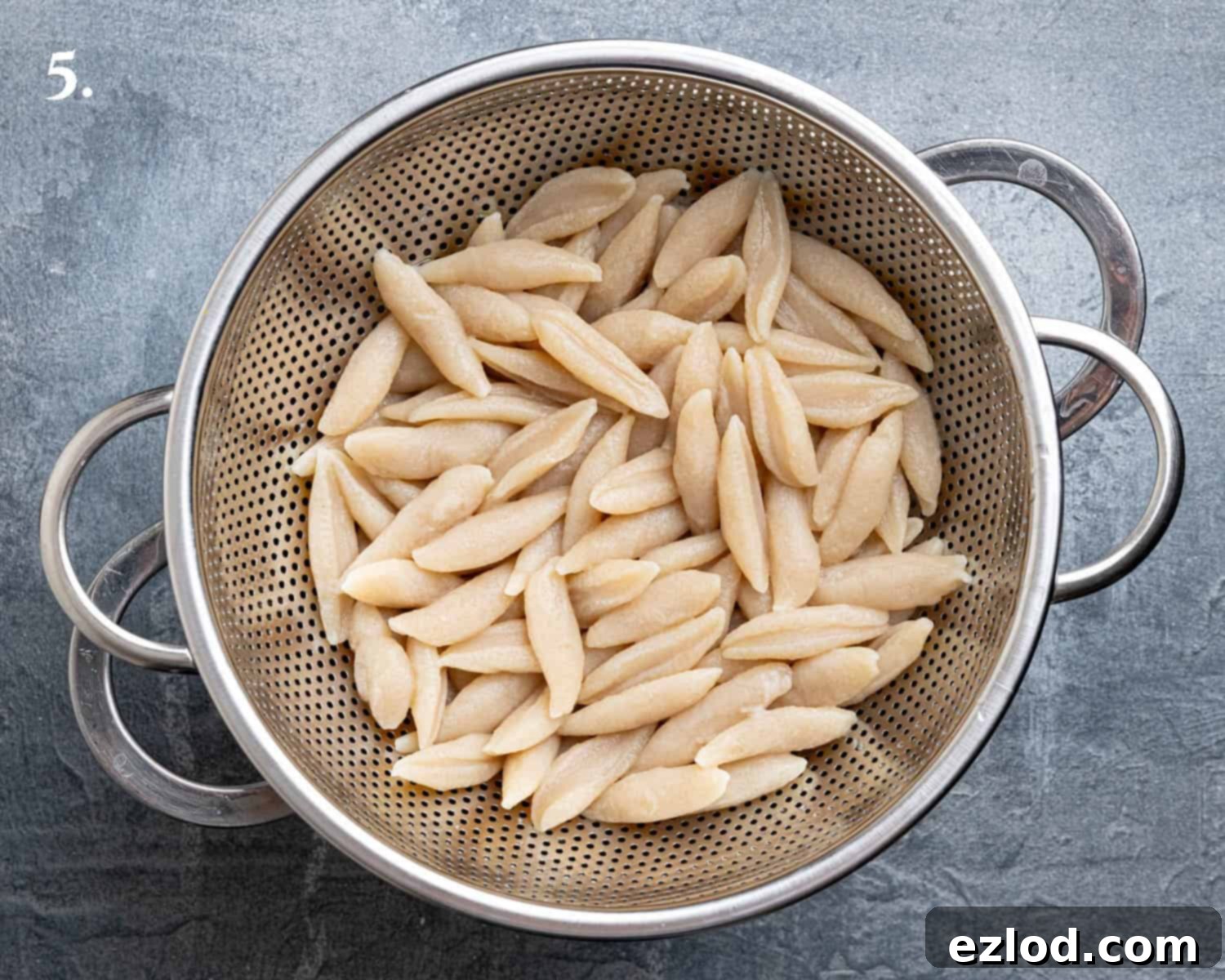
Step 6: Begin the Gochujang Sauce. Heat the olive oil or vegan butter in a large pan or wok over medium heat. Add the thinly sliced red onion and sauté for about 5-10 minutes until it has softened and become translucent. Next, add the crushed garlic, gochujang paste, and tomato puree to the pan. Cook for another minute, stirring constantly, to allow the flavours to meld and the raw edge of the tomato paste to cook out, releasing its deep umami notes.
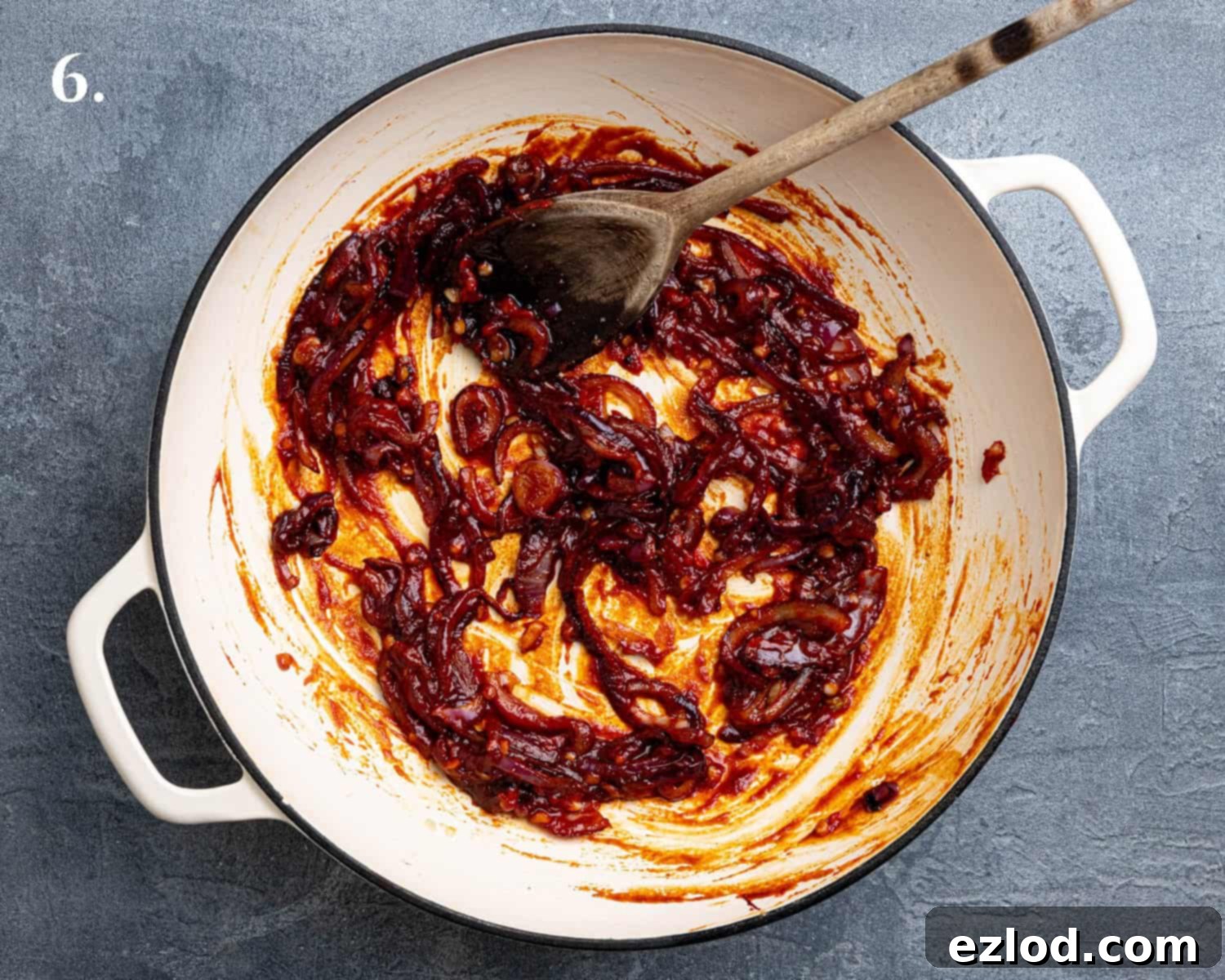
Step 7: Finish and Serve. To the pan, add the nutritional yeast, the remainder of your blended silken tofu (the portion leftover from making the noodles), the reserved 120ml (½ cup) of pasta water, and season with salt and freshly ground black pepper to taste. Stir everything together until the sauce is smooth, creamy, and heated through. Taste and adjust seasoning as needed – an optional ½ Tablespoon of soy sauce can be added if you desire an extra savoury kick. Finally, gently stir in the cooked scissor cut tofu noodles, tossing them to ensure they are thoroughly coated in the luxurious gochujang sauce. Serve immediately for the best experience.
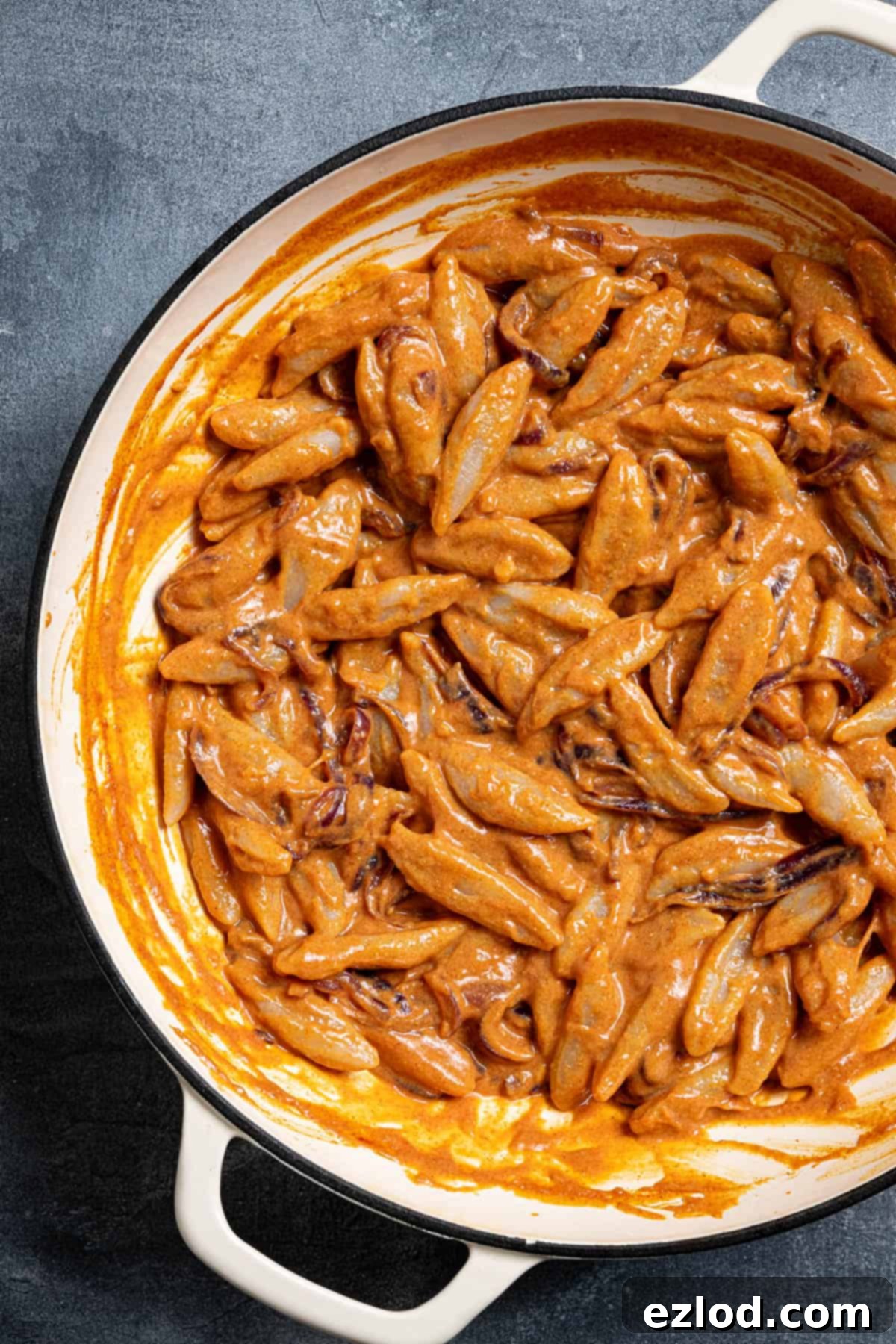
Top Tips for Perfect Scissor Cut Tofu Pasta
Achieving delicious results with this unique pasta is straightforward, but a few key tips can elevate your dish from good to exceptional:
- Monitor Noodle Cooking Time Carefully: The cooking time of your noodles is directly related to their size. Thicker or larger pieces will naturally take longer. Generally, they should cook for 5-10 minutes and will reliably float to the surface of the boiling water once they are sufficiently cooked. The ideal texture is ‘al-dente’ – slightly firm with a pleasant chewiness in the middle. Be cautious not to overcook them, as silken tofu noodles can become overly soft and lose their appealing texture if left in the water for too long.
- Strive for Uniformity: To ensure consistent cooking and a cohesive dish, try your best to cut all the noodles roughly the same size. Avoid making any pieces excessively large, as they will take longer to cook through and may have an inconsistent texture compared to smaller pieces.
- Cutting Technique Options: If you’re new to the scissor-cutting method or simply prefer more control, you don’t have to cut the noodles directly into the boiling water. Instead, you can snip the dough pieces onto a lightly floured baking tray. This allows you to collect them before adding them all to the pot at once. If using this method, ensure the cut pieces are in a single layer on the tray to prevent them from sticking together. Once in the boiling water, give them a quick stir to separate any clingy pieces.
- Preventing Stickiness: The tofu pasta dough is generally quite manageable, but occasionally, it might stick to your kitchen scissors. If you encounter this, a simple solution is to lightly grease both the blades of your scissors and the surface of the dough with a little olive oil. This creates a non-stick barrier, allowing for clean, effortless cuts.
- Enhance Sauce Flavour: For an even deeper and more complex flavour in your gochujang sauce, consider dissolving a quarter to half a teaspoon of low-sodium vegetable stock powder into the 120ml (½ cup) of reserved pasta water before adding it to the sauce. This small addition can significantly boost the umami and richness of the finished dish.
- Serve Immediately: For the best texture and flavour, this scissor cut tofu pasta, like most fresh pasta, is best enjoyed immediately after it’s prepared and coated in the sauce.
- Dough Reshaping: As you snip pieces from the dough ball, it might start to lose its shape. Don’t hesitate to periodically use your hands to gently reshape it back into a smooth ball. This makes the cutting process easier and more consistent.
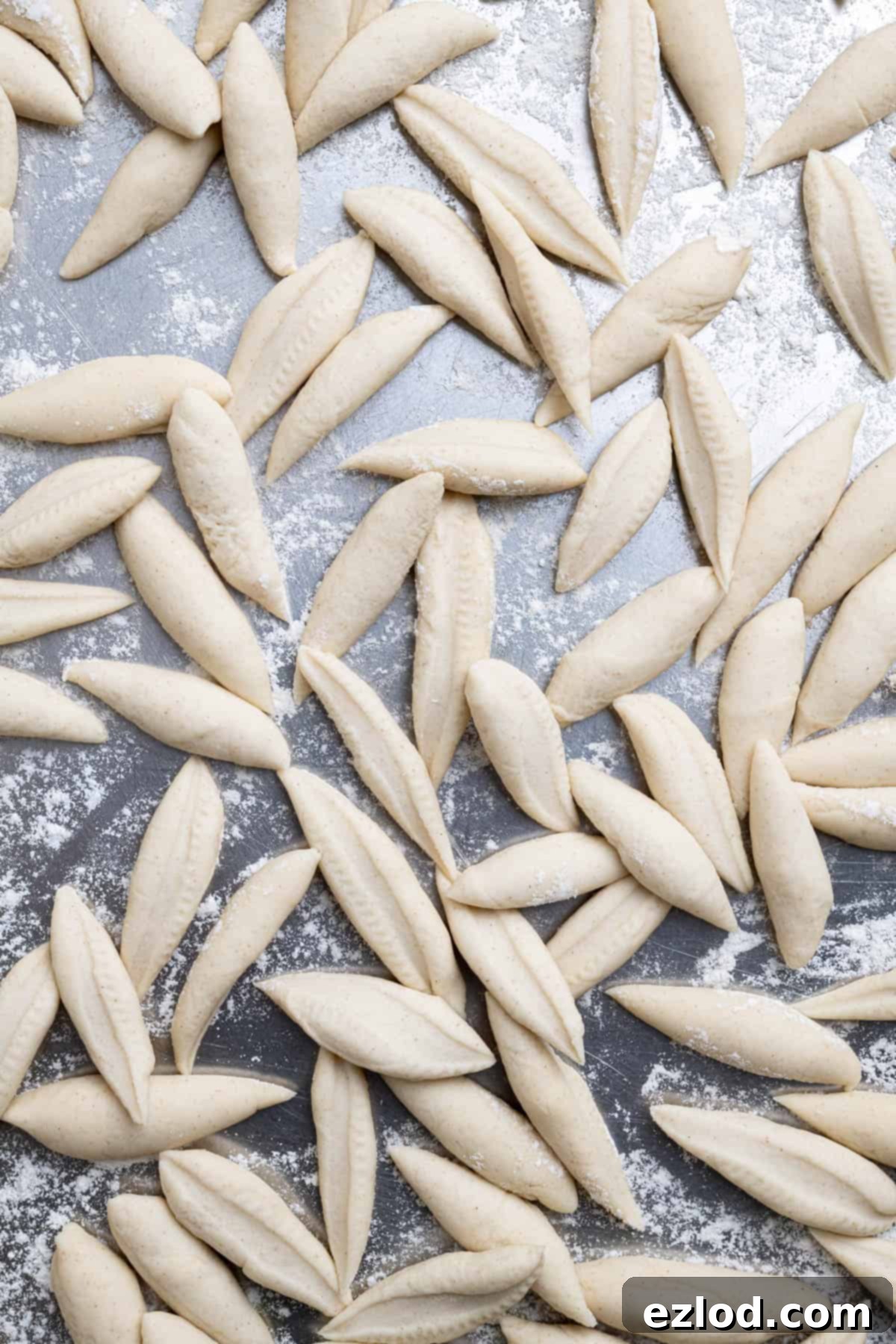
Frequently Asked Questions (FAQ’s)
The beauty of these versatile tofu noodles is their adaptability! They truly work with a wide array of sauces. I often create a simple basic tomato sauce and then stir in the leftover blended tofu to transform it into a wonderfully creamy tomato sauce. Pesto, whether traditional or a vegan sun-dried tomato variety, also makes an excellent choice. Beyond Italian-inspired flavours, these noodles are fantastic with Asian-style dressings. Think a vibrant chilli-soy-garlic sauce, a nutty sesame dressing, or even a spicy peanut sauce. You can even snip them directly into your favorite vegan soups for added texture and protein, similar to dumplings.
While this scissor cut tofu pasta is truly at its best when enjoyed freshly cooked, any leftovers can be stored. Simply place them in an airtight container in the refrigerator, where they will keep well for up to 3 days. When reheating, you might want to add a splash of water or vegetable broth to loosen the sauce. The pasta dough itself is more flexible: you can prepare the dough up to 1 day in advance. After kneading, wrap it tightly in plastic wrap and store it in the refrigerator until you’re ready to cut and cook the noodles.
No, this recipe is not gluten-free as it uses plain (all-purpose) wheat flour. As mentioned above, gluten-free flours behave very differently and are not recommended for this particular dough texture.
This pasta is considered high-protein primarily due to the inclusion of silken tofu. Tofu is a fantastic plant-based source of protein, and by replacing water with blended tofu in the dough, we significantly boost the protein content compared to traditional flour-and-water pasta. The leftover tofu also makes the sauce creamy and adds further protein.
Adjusting the spice level is very easy! The amount of gochujang paste dictates the heat. For a milder sauce, start with 1 tablespoon of gochujang. If you prefer a spicier kick, increase it to 2 tablespoons or even a little more, tasting as you go. You can also add a pinch of red pepper flakes for an extra layer of heat.
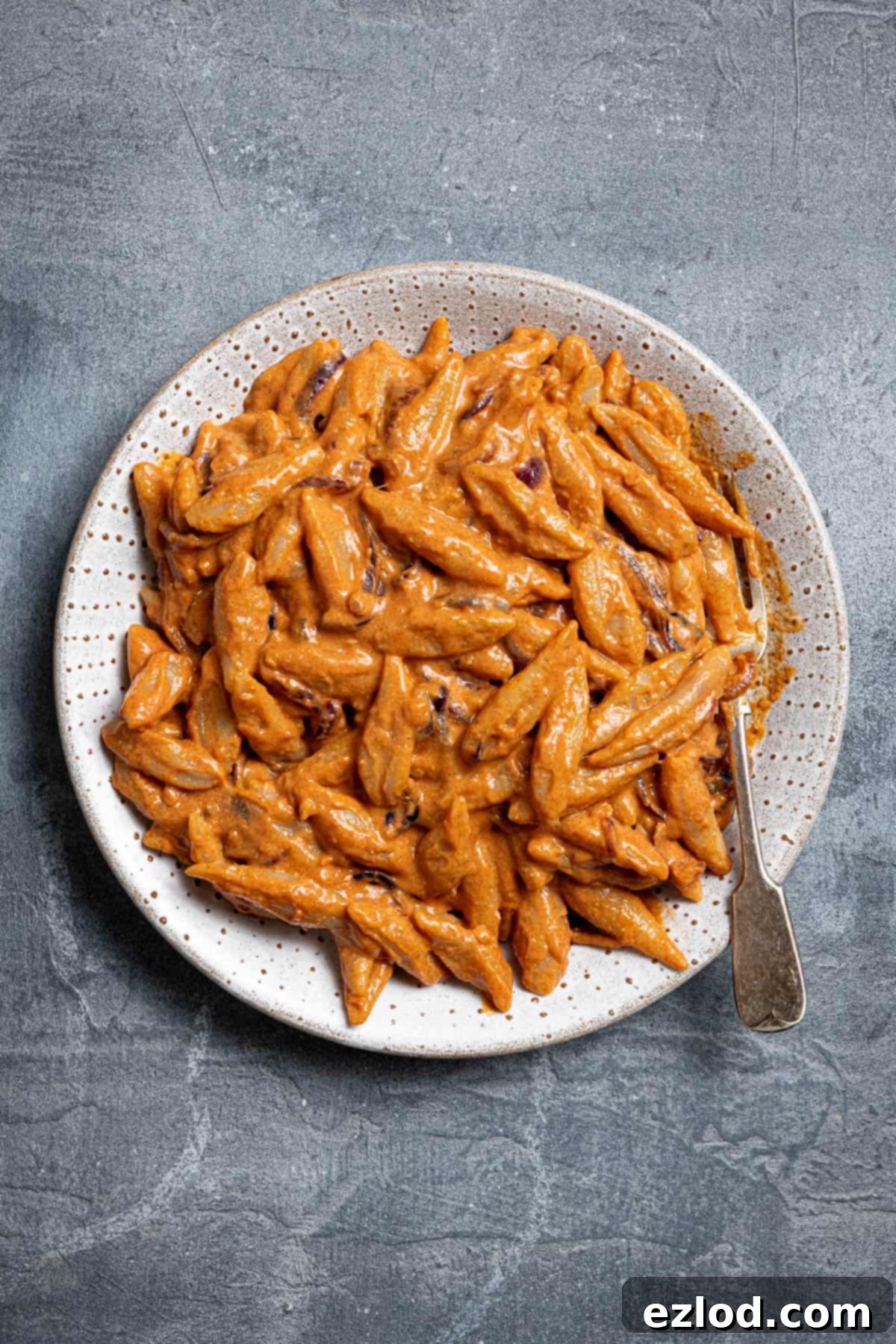
If you’ve tried this delightful recipe, I’d love to hear about your experience! Please take a moment to rate it, leave a comment below, or share your creation on Instagram by tagging @domestic_gothess and using the hashtag #domesticgothess. Your feedback and photos truly make my day!
All images and content on Domestic Gothess are copyright protected. If you wish to share this recipe, please do so by utilizing the provided share buttons. Please refrain from screenshotting or posting the recipe or content in its entirety. Instead, kindly include a direct link to this post for the complete recipe.

Print
Scissor Cut Tofu Pasta With Creamy Gochujang Sauce (Vegan)
Equipment
-
kitchen scissors/shears
-
blender or food processor
-
large pot
-
large pan or wok
Ingredients
For the Tofu Noodles:
- 349 g (12 oz) firm silken tofu (one packet, blended smooth)
- 250 g (2 cups) plain (all-purpose) flour
- pinch of salt
For the Creamy Gochujang Sauce:
- 1 Tablespoon olive oil or vegan butter
- 1 medium red onion thinly sliced
- 4 cloves garlic peeled and crushed
- 1-2 Tablespoons gochujang paste depending on desired spice level
- 1 Tablespoon tomato puree/paste
- 2 heaped Tablespoons nutritional yeast
- the tofu leftover from making the noodles (approx. 169g or ¾ cup)
- ½ cup (120ml) reserved pasta cooking water (plus more if needed)
- ½ Tablespoon soy sauce (optional, for extra umami)
- salt and pepper to taste
Instructions
For the Tofu Noodles:
-
Tip the entire block of silken tofu into a blender or food processor and blend until completely smooth and creamy.
-
In a large bowl, place the plain flour and add 180g (¾ cup) of the blended tofu along with a pinch of salt. Mix well to form a shaggy dough, then use your hands to bring it together into a firm ball. The dough should be quite stiff. If it’s too dry, add a tiny bit more tofu; if too sticky, add a little more flour.
-
Knead the dough on an unfloured surface for 5 minutes until it is very smooth, elastic, and no longer sticky. Cover the dough with a damp cloth or plastic wrap and leave it to rest for 15-20 minutes. Meanwhile, bring a large pot of generously salted water to a rolling boil.
-
Use a pair of clean kitchen scissors to snip off bite-sized pieces of the dough, either directly into the boiling water or onto a lightly floured tray. Turn and reshape the dough ball periodically as you cut to maintain an even shape. If cutting onto a tray, carefully transfer all the pieces into the boiling water and stir briefly to separate them.
-
Cook the noodles for 5-10 minutes until they are al-dente and float to the surface. Adjust cooking time based on noodle size; avoid overcooking.
-
Drain the cooked noodles well, making sure to reserve 120ml (½ cup) of the pasta cooking water. Rinse the noodles briefly with cold water to prevent them from sticking together.
For the Creamy Gochujang Sauce:
-
Heat the olive oil or vegan butter in a large pan over medium heat. Add the thinly sliced red onion and cook for 5-10 minutes until softened. Stir in the crushed garlic, gochujang paste, and tomato puree, cooking for another minute until fragrant.
-
Add the nutritional yeast, the remaining blended tofu (approximately 169g or ¾ cup), the reserved 120ml (½ cup) pasta water, and season with salt and pepper to taste. Stir well until the sauce is smooth and creamy. If desired, add ½ Tablespoon of soy sauce for extra depth of flavour.
-
Add the cooked tofu noodles to the pan and toss them gently until they are thoroughly coated in the creamy gochujang sauce. Serve immediately and enjoy!
Notes
- For additional tips, detailed ingredient information, and helpful step-by-step photos, please refer to the main blog post above.
- Remember to adjust the noodle cooking time according to the size you cut them. They should typically cook for 5-10 minutes and will float to the surface when done. Aim for an al-dente texture; avoid overcooking to prevent them from becoming too soft.
- To give your sauce an even richer flavour, consider mixing a small amount of low-sodium vegetable stock powder into the 120ml of reserved pasta water before incorporating it into the sauce.
- If the dough starts to stick to your scissors during cutting, lightly grease both the scissor blades and the dough with a tiny amount of oil.
- The pasta is best enjoyed fresh. Leftovers can be stored in an airtight container in the fridge for up to 3 days. The raw dough can be made one day ahead and stored tightly wrapped in the fridge.
